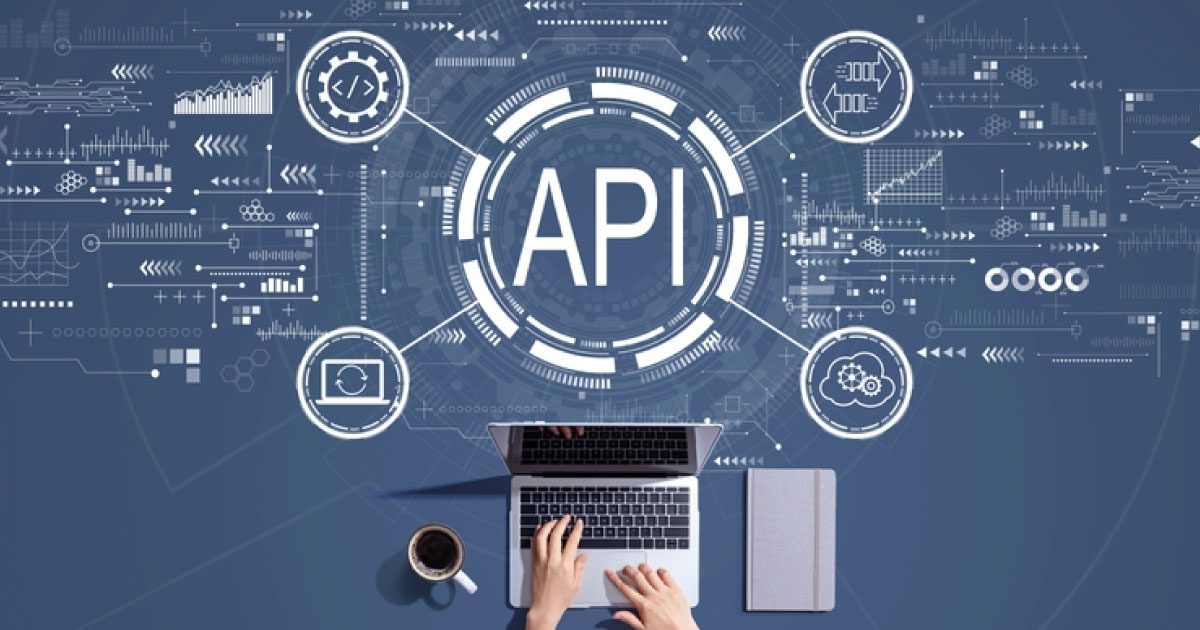Introduction
A set of established protocols, procedures, and tools known as an API—which stands for application programming interface—allows various software programs to interact and communicate with one another. Developers can access certain functions or data from other programs, services, or platforms using APIs as intermediates. They offer a standardized method for various software parts to communicate and operate harmoniously one with the other. Consider an API as a contract between various software applications. APIs specify the data formats that should be utilized, how requests for particular activities or information should be made, and how the responses should be organized.
The historical evolution of API
The idea of APIs was first utilized to encapsulate and abstract functions found in libraries or operating systems in the early days of computer development. Application Programming Interfaces (APIs) are evolving at the same time that software development and technology are progressing. In order to become essential elements of contemporary software ecosystems, APIs have through a number of stages of development and evolution. APIs developed along with technology and were crucial in making it possible for software to interact with distinct systems. Application programming interfaces were used for web-based services in the early days of internet use, yet they have grown quickly with the advent of cloud computing, mobile apps, and the Internet of Things (IoT). Over the course of the years, APIs have transformed from basic local system interfaces to potent instruments that enhance seamless communication and integration among various software applications, platforms, and technologies.
What are the types of APIs?

RESTful APIs: Representational State Transfer APIs, or RESTful APIs, are the most prevalent kind of web APIs. They stick to the REST principals and interact via the GET, POST, PUT, and DELETE conventional HTTP methods.
SOAP APIs: Simple Object Access Protocol (SOAP) APIs are protocol-independent and employ XML-based messaging. They offer more stringent requirements for the transmission of data and frequently include embedded security measures.
JavaScript Libraries: This includes libraries of pre-written JavaScript code that offer particular functionalities are known as JavaScript. Without having to start from scratch, developers can incorporate these libraries into their programs to accomplish desired functionalities.

Third-party Integrations: A lot of programs and services provide APIs so that other programs can communicate with their features. Taking a look at social media sites for instance, they provide APIs that make it possible for developers to incorporate social elements into their applications.
Windows API: Microsoft's Windows API gives programs a mechanism to communicate with the Windows operating system. File system operations, networking, graphics etc. are a few of the functionalities it covers.
POSIX API: The Portable Operating System Interface API, also known as POSIX, is a norm for Unix-like operating systems. It affords applications a steady interface via which they can communicate with various Unix-based platforms.
SQL APIs: via SQL queries, applications can communicate with relational databases via APIs like ODBC (Open Database Connectivity) and JDBC (Java Database Connectivity).
NoSQL APIs: A variety of NoSQL databases, including MongoDB and Cassandra, provide APIs that let software programs access and alter data in non-relational formats.
Remote APIs: These APIs enable communication between remote devices. They frequently get used in Internet of Things (IoT) settings, wherein devices interact with one another and share data via the web.
Open APIs: These are accessible APIs that are made available to developers outside of the company that created them. Open APIs are usually documented, and that pushes the creation of applications by external developers using them.
Composite APIs: also referred to as orchestration APIs, combine several functions or requests from various endpoints into a single API call. They offer a greater degree of ease and greater levels of abstraction for developers.
Paid APIs: Some APIs are available as paid services, requiring developers to sign up or pay for usage that exceeds a particular amount. Paid APIs usually come with additional aid or special features.
Internal APIs: These APIs are only accessible by other employees of the same company. Internal APIs provide support in retaining regularity and scalability across the company's software projects.
Anatomy of an API
Endpoints and the Value of Each: A specific URL where a request can be made is an API endpoint. Each endpoint is associated with a certain resource or activity that the API is capable of carrying out. Endpoints are important since they specify the API's capabilities and range of use.
Methods: GET, POST, PUT, DELETE: To define the type of activity a client wants to perform, APIs use several HTTP methods. Typical HTTP techniques include GET, for Retrieving information from a server. POST, which sends information to the server in order to establish a new resource. PUT, which updates the server's already-existing data and DELETE, which is an action that eliminates a resource from the server.
Request and Response Bodies, and Parameters: API calls frequently have parameters that give the request additional or more specified information. Both the request body and the URL could include parameters. Data that a user wants to communicate to the server can be found in the request body. The data that the server delivers back to the client is also contained in the response bodies of API responses.
Real-World Analogies for Understanding APIs
The Restaurant Menu Analogy The restaurant menu analogy: Think of an API like a menu at a restaurant. Similar to how a menu offers meals and their descriptions, an API documentation lists the endpoints, methods, and parameters that are accessible. The chef (server) prepares the food once a customer (client) orders it, then returns it to the customer (responds to the request). Or by stating the dish numbers and any other requirements (parameters), you, the client, choose the things you desire. Your order is taken by the waiter (API), who then relays it to the kitchen (server) and returns your meal (response) when it is prepared. In this analogy, we can see that without speaking to the kitchen or the server directly, you, the client, want to carry out an action (order food). You can order from the menu (API documentation), which acts as an interface, and it will tell you what to order and how to order it. Your order is taken by the waiter (API), who then contacts the kitchen (server) and returns with your food (response).
Analogy of the Electrical Socket: An API can be compared to an electrical socket. The socket can accommodate a variety of plug-in devices (applications) that need to access data or function. The socket interface (API) makes sure that equipment can properly interact with and be powered by the server. These devices can connect to the electrical socket (API) and draw power (data or functionality) without having to comprehend the intricate details of how electricity is produced. In this analogy, it can be seen that, without being aware of the underlying mechanisms, the electrical socket (API) serves as a connector that enables devices (applications) to access power (data or functionalities). Applications need to comply with the API requirements for successful interaction, just as devices need to be compatible with the socket. The socket affords a variety of devices to operate without a hitch while ensuring safety and uniformity.
The Importance of API Protocols
REST vs. SOAP vs. GraphQL: Differences and Use Cases: The standards and procedures that control how clients and servers interact are set forth by API protocols. REST which stands for Representational State Transfer, is a popular architectural design strategy for building networked applications. It highlights simplicity and interacts via conventional HTTP protocols. On the other hand, the SOAP (Simple Object Access Protocol) protocol specifies a set of guidelines for message structuring. A query language for APIs called GraphQL enables users to only request the data they actually require, preventing both over- and under-fetching of data.
The Role of HTTP in Web APIs: the basis of almost every web API is built on HTTP (Hypertext Transfer Protocol). It offers a standard approach for client-server interaction via the internet. APIs employ HTTP methods to specify the kind of action being taken, and status codes to show how the request was handled. Due to its statelessness, HTTP is a good option for creating scalable and distributed applications.
Authentication and Security in APIs
API Keys and OAuth: Mechanisms are needed for API Keys and OAuth APIs to guarantee that only authorized clients can access their resources. The most popular types of authentications are API keys and OAuth tokens. In order to confirm their identity, end users must include an API key in their requests. A more complex protocol called OAuth (Open Authorization) enables third-party applications to access resources on behalf of a user without disclosing private login information.
Rate limits and their essence: APIs make use of rate limiting as a strategy to guard against improper use and guarantee proper usage. Using this strategy limits the total number of calls a client can put in in a specific period of time. Rate limiting keeps servers stable and stops data scraping while making sure that no one client uses up all the API's resources.
Threats and mitigation strategies: CORS, CSRF: By regulating the accessibility of resources across diverse areas, CORS is able to stop unauthorized calls. Various security risks and threats such as Cross-Origin Resource Sharing (CORS) and Cross-Site Request Forgery (CSRF) can affect APIs. CSRF attacks entail persuading a user to submit requests that are not intended.
What is the Importance of using API?
Integration and scalability: APIs or application programming interfaces offer an adaptable way to expand the functionality of current programs without impacting their basic operations. APIs make it possible for organizations to easily interface with external services and adjust to shifting requirements.
Interoperability: Regardless of the underlying technology used by various software systems, APIs allow for easy communication and collaboration.
Efficiency and Productivity: APIs encourage code reuse, cutting down on effort and development time. Instead of creating everything from scratch, developers can expand on already existing functionalities. Software that is more consistent and reliable is also produced, in addition to shortening development cycles. This helps save time and efforts as well as a reduction in cost and efficiency in work.
Collaboration and Innovation: APIs enable outside developers to build extensions, integrations, and add-ons for already-existing systems. This leads to the developments of new features, applications integrations promoting hence promoting advancements in technology.
Real-Life Examples of API Usage
How Third-Party Apps are Powered by the Twitter API: Numerous third-party programs that provide distinctive experiences outside of the core Twitter app have been developed thanks to Twitter's API. These third-party apps in question use Twitter's API to offer a variety of features, from social media management tools to analytics dashboards.
Integrating Payment Gateways via APIs: Through the integration of payment gateways through APIs, e-commerce platforms enable users to make secure online purchases. These APIs control confidential info, such as details of credit cards, and also facilitate seamless transaction operations.
The Role of APIs in IoT (Internet of Things): Device communication and data interchange in the IoT environment are made possible through APIs. APIs make it possible for smart devices to accumulate, exchange, and analyze info, which leads to the creation of sentient and linked surroundings.
How to Consume an API
Using Tools like Postman and cURL: Tools such as Postman, which offers an intuitive interface for making API calls and view solutions, are utilized by developers to communicate with APIs. cURL, a command-line program for sending HTTP queries, is another well-liked choice.
Incorporating APIs into Programming Projects: APIs have become an essential part of building modern software. By sending HTTP requests to the API endpoints using programming languages like Python, JavaScript, or Java, developers can integrate an application programming interface into their projects. Applications can access external data and functionality thanks to this connection.
Error Handling and Understanding Status Codes: correctly handling errors while using APIs is very important. APIs frequently provide status codes in their answers to let users know how a request has gone. When a request is successful or has failed, status codes like 200 (OK), 404 (Not Found), and 500 (Internal Server Error) are used to indicate this. Application responses to various scenarios are ensured by proper error handling.
Designing Effective APIs
Best Practices for designing APIs: Consistent endpoint topologies, naming conventions, and appropriate documentation are just a few examples of the variables that must be carefully taken into account while designing an API. To reduce the cognitive strain on developers who want to integrate APIs, they should be simple to use.
API documentation's function: The success of application programming interfaces or APIs depends on concise and thorough documentation. Through the documentation of APIs, developers may find information about the endpoints, approaches, and anticipated results. Developers are more likely to use APIs that have been thoroughly documented because they feel more confident in their dependability.
Verifying Backward Compatibility using Versioning: While APIs are evolving, it has become important to maintain backward compatibility in order to prevent breaking running applications as APIs develop. Versioning enables developers to update and enhance the API and at the same time ensure that earlier versions continue to work as intended. To facilitate the smooth management of modifications and transitions, effective versioning techniques are needed.
The Economic Impact of APIs
Monetization Techniques: Pay-per-Use, Freemium: Businesses can make money by making use of the access opportunities provided by APIs for their services. Freemium models, where basic access is free but additional features are paid for, as well as pay-per-use models, subscription models, and tiered pricing are examples of monetization tactics.
How Businesses and Industries Have Changed as a result of APIs: Multiple sectors have seen business models changed via APIs. In the current digital landscape, organizations are able to employ external services, data, and functions to develop new goods and services. Partnerships and teamwork made possible by APIs foster expansion and financial success.
The Rise of API-First Companies: The Emergence of API-First Businesses API development is given top priority by API-first businesses as a vital component of their corporate strategy. These organizations create APIs to support their own applications but also use them to act as platforms for other developers. A collaborative innovation landscape emerges as a result of this.
Limitations and Concerns with APIs
Deprecation and Modification of Terms of Service: Over time, APIs may become obsolete or have their functionality altered. Applications created by developers that rely on these APIs must be updated as necessary. It is necessary to constantly check API documentation for announcements and revisions.
Data privacy concerns: Highly confidential information is frequently exchanged using APIs. Therefore, protecting the security and privacy of data is very important. Leveraging encryption, using appropriate authentication methods, and adhering to industry best practices are some of the ways to ensure user data privacy and security.
Being current: Staying current with new trends and standards alongside technology development is a must for APIs. Compatibility problems, security holes, and lost opportunities to take advantage of new features and upgrades might result from ignoring API updates.
Conclusion
A simple communication tool- API, has evolved into a critical accelerator for creativity, efficiency, and connection in the digital age. It is therefore imperative for developers, organizations, and users alike to comprehend how APIs function, their many forms, and their impact on the technological world



